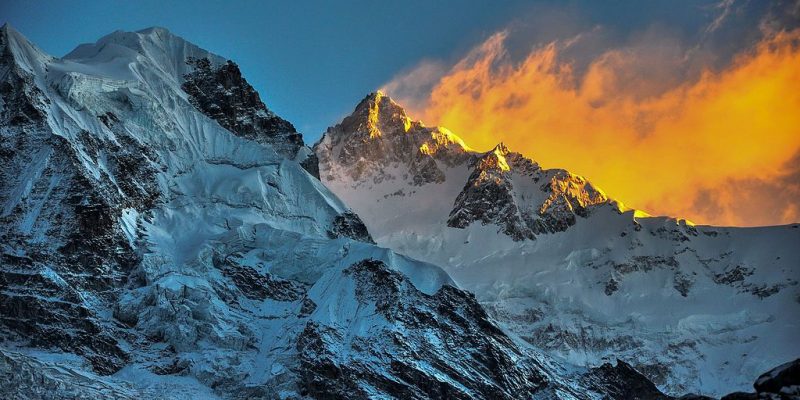Overview
The Kanchenjunga Base Camp Trek is a challenging and rewarding trekking experience that takes you through remote trails, diverse landscapes and offers panoramic views of the third-highest mountain in the world, Mount Kanchenjunga. This article will discuss the distance and difficulty of the Kanchenjunga Base Camp Trek, including the route, altitude, and terrain.
Route and Distance
The Kanchenjunga Base Camp Trek can be done in several different routes, but the most common one is the North Base Camp trek, which takes you through the mountain’s north side. The trek begins with a flight to Bhadrapur and a drive to Taplejung. The trek takes you through several villages, including Mitlung, Chirwa, Sekathum, Amjilosa, and Gyabla, before reaching Ghunsa.
After Ghunsa, the trail leads to the Kambachen base camp, Lhonak, and Pangpema, where you can see the stunning views of Mount Kanchenjunga. The trek then retraces the trail back to Ghunsa, where the trek diverges towards the south base camp. The trail leads to Sele La, Tseram, and finally to the Kanchenjunga South Base Camp.
The total distance covered during the Kanchenjunga Base Camp Trek is around 200 km, depending on the route. The trek takes around 20-25 days to complete, allowing ample time for acclimatization and rest days. The distance covered daily varies depending on the altitude gain, terrain, and weather conditions.
Difficulty
The Kanchenjunga Base Camp Trek in the Himalayas is challenging trek due to its high altitude, remote location, and rugged terrain. Trekkers must be physically fit, mentally prepared, and have prior trekking experience to tackle this trek in the Himalayas. The trail takes trekkers through some of the most remote and untouched regions of the Himalayas, with steep ascents and descents, narrow trails, and unpredictable weather conditions.
The altitude can also be a significant challenge, with the base camp located at an elevation of 5,143 meters (16,873 feet). It is crucial to acclimatize appropriately to the high altitude to avoid altitude sickness, which can be life-threatening.
However, the rewards of the trek in the Himalayas are unparalleled, with stunning views of the Himalayan peaks, unique cultural experiences, and a sense of accomplishment that comes with completing a challenging trek in the Himalayas.
Altitude
The Kanchenjunga Base Camp Trek takes you through high-altitude terrain, with several passes and peaks that require acclimatization. The highest altitude reached during the trek is at Pangpema, also known as the Kanchenjunga North Base Camp, at 5,143 meters. The trek also crosses several high passes, including Sele La Pass (4,290 meters) and Sinion La Pass (4,600 meters), which require endurance and proper acclimatization.
Terrain
The terrain during the Kanchenjunga Base Camp Trek varies from lush subtropical forests to alpine meadows and barren rocky landscapes. The trek takes you through remote and rugged trails, crossing rivers, waterfalls, and challenging ascents and descents. The terrain can be slippery and muddy during the monsoon season, and trekkers need to be cautious while trekking during this time.
Acclimatization
Acclimatization is crucial during the Kanchenjunga Base Camp Trek due to the high altitude and rugged terrain. The trek includes several rest days, allowing trekkers to acclimatize and adjust to the altitude. Trekkers are advised to drink plenty of water, avoid alcohol and cigarettes, and take it slow while trekking to prevent altitude sickness.
Equipment
Proper trekking equipment is essential for a safe and enjoyable Kanchenjunga Base Camp Trek. Trekkers must have sturdy hiking boots, warm clothing, waterproof jackets, and sleeping bags, among other things. Hiring a porter or a guide can also be helpful, as they can carry heavy equipment and provide guidance throughout the trek.
Conclusion
The Kanchenjunga Base Camp Trek is a challenging yet rewarding trekking experience that takes you through remote trails and diverse landscapes and offers panoramic views of the third-highest mountain in the world, Mount Kanchenjunga.
The trek requires proper preparation, including physical and mental fitness, prior trekking experience, and adequate equipment. The trek includes several rest days for acclimatization and allows trekkers to experience the region’s unique cultural and natural heritage.
While it is a challenging trek, with proper preparation and guidance, trekkers can enjoy an unforgettable adventure through some of the most stunning landscapes in the world.







